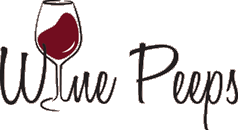How We Taste
The Wine Peeps conduct both blind and non-blind tastings, depending upon the circumstances surrounding each tasting. In addition to assigning a Quality rating for each wine that we taste, we calculate a QPR (quality-to-price ratio) rating because we believe that it is not only important to identify good wines but wines that give you the most bang for your buck. A complete explanation of our ratings system can be found in Wine Ratings.
Blind Tastings
If you are a regular reader, you know that we are strong believers in blind tastings as the best way to evaluate wine. By tasting wines blind, you are not influenced by the label, the reputation of the winemaker, or the price. You are focused totally on the quality of the wine and are completely unbiased in your evaluation.
- The Wine Peeps team has been conducting monthly wine tasting dinners for many years. During these dinners, we taste six wines blind that we have usually purchased at retail. Each dinner has a theme, and the dinner guests are only told the wine’s region and the varietal. For complete information on how we set up and conduct these tastings, please visit Tasting Dinners.
- Several times a week, the Wine Peeps team gets together for dinner and we have a private tasting with two wines blind. The setup for these dinners is slightly different from our monthly dinners. Periodically, we sack up pairs of wines we have purchased that we would like to blind taste against each other. We label the pairs with a letter (A, B, C, etc.) to keep them together and also indicate on the sacks if they are red or white. After sacking up anywhere from six to ten pairs, we put them away. By the time we pull them out of the cabinet for one of our family dinners, even we have forgotten what the wines are. Depending on the meal that is being prepared, we grab either a red or white pair. These tastings are considered double-blind. While the foodies out there probably would scoff at this method of food and wine pairing, we have learned a lot about wine in the process. During these dinners not only are we trying to determine our favorite between the two wines but we are challenging ourselves to identify the wine’s region and varietal.
- We also receive trade samples of new releases from wineries and importers. These samples are tasted blind following our Tasting Procedures listed in Trade Samples.
Non-Blind Tastings
From time to time, we also taste wines at wineries, restaurants, public tastings, trade shows, conferences, etc. Because of the setup at these venues/events, these tastings are by definition non-blind. Hopefully, we are experienced and professional enough to fairly review wines tasted in these environments.

 Wine Peeps is an independent wine blog dedicated to helping you get the most bang for your buck in wine. We do this through blind tastings of wine from around the world and calculations of
Wine Peeps is an independent wine blog dedicated to helping you get the most bang for your buck in wine. We do this through blind tastings of wine from around the world and calculations of 








